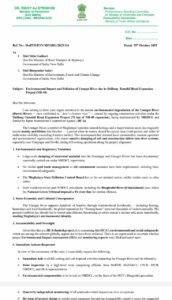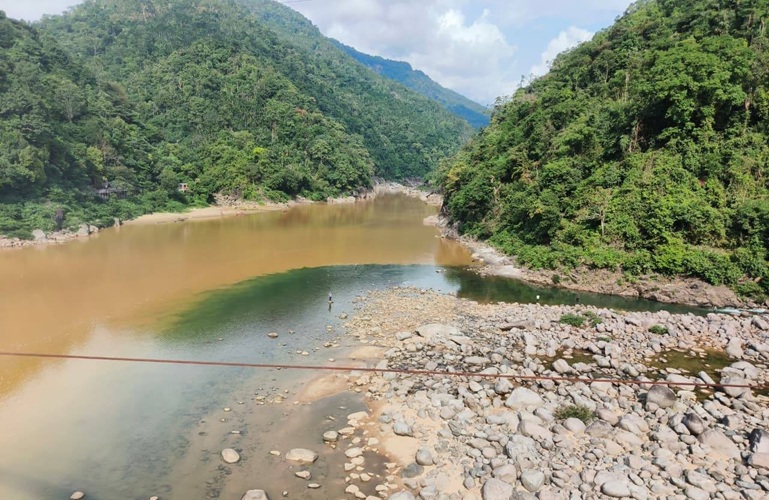Shillong: The Umngot River in Meghalaya — once celebrated as one of Asia’s cleanest rivers and famous worldwide for its glassy, crystal-clear waters — has turned muddy and lifeless this yea due to a road project. The incident has sparking widespread concern among locals, environmentalists, and lawmakers.
Locals who depend on the river for tourism and livelihoods say the transformation has been sudden and alarming.
The usually transparent waters that draw thousands of visitors annually now appear murky, with large stretches of the riverbed obscured by silt and debris.
The situation, they say, threatens not just tourism but Meghalaya’s ecological identity itself.
Member of Parliament from Shillong, Dr. Ricky A.J. Syngkon, has written to Union Road Transport Minister Nitin Gadkari and Environment Minister Bhupender Yadav, seeking immediate intervention to address what he called “severe environmental degradation” caused by ongoing work on the Shillong–Tamabil Road Expansion Project, executed by the National Highways and Infrastructure Development Corporation Limited (NHIDCL) and funded by the Japan International Cooperation Agency (JICA).
In his letter, Syngkon said large-scale dumping of excavated earth and debris from hill-cutting operations along the 71-km stretch of NH-40 has polluted both the Umngot and Umtyngar rivers.

He alleged that basic environmental safeguards, such as proper silt containment and spoil bank management, have been ignored.
The MP also noted that the Meghalaya State Pollution Control Board has yet to take action, even as similar violations in other states have drawn penalties from the National Green Tribunal.
The MP pointed to the socio-economic impact of the pollution, warning that hundreds of families in the Dawki area who rely on river-based tourism — including boating, homestays, and handicrafts — have already been affected by mass tourist cancellations.
“The Umngot is more than a river; it is a symbol of Meghalaya’s natural heritage. Losing it would mean losing a part of our identity,” he said.
Syngkon also questioned the oversight mechanisms of JICA, known globally for its stringent environmental and social safeguards.
He called for an immediate halt to hill-cutting and dumping near the river, a joint inspection involving central and state agencies, and environmental compensation to be imposed on NHIDCL.
He also urged the government to initiate independent monitoring, revise project designs to avoid sensitive zones, and prepare a comprehensive restoration plan for the river ecosystem.
The road project, part of the Shillong–Dawki–Tamabil corridor, has been under scrutiny since September when a portion of the under-construction PWD road collapsed into the Umngot River near Dawki’s popular boating point.
ALSO READ: Assam govt orders probe into alleged singing of Bangladesh’s national anthem at Congress event
No casualties were reported in that incident, but environmentalists said it was an early warning of unchecked construction risks.
Locals have appealed to the government to act swiftly, stressing that they are not opposed to development but want projects to respect the fragile hill ecosystem.
“Development should not come at the cost of nature,” said a Dawki resident.
For now, as the once-pristine waters of Umngot flow thick with silt, Meghalaya’s most photographed river stands as a stark reminder of the growing clash between infrastructure expansion and environmental preservation.















